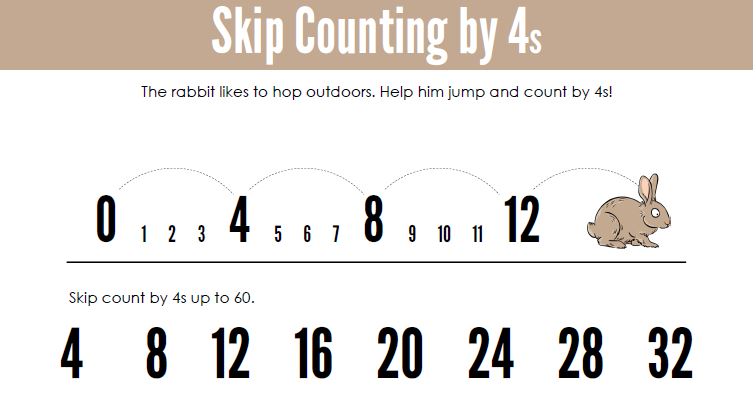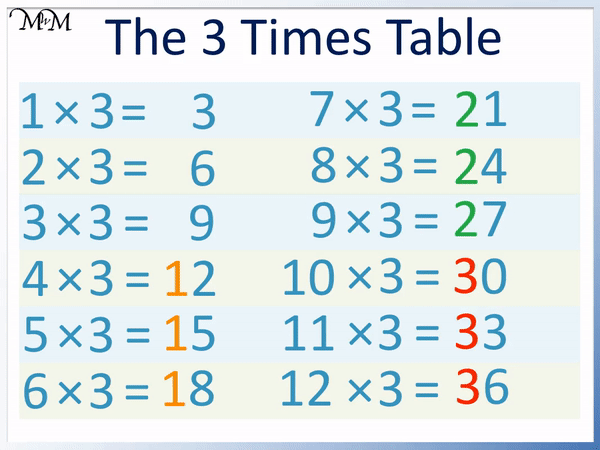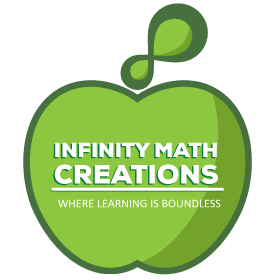The transition from learning addition and subtraction to learning multiplication is one of the most memorable challenges for elementary school students. It is also a daunting task for educators to teach multiplication–many are not sure what how to develop effective plans for teaching the operation to mastery.
No kid wants to sit around memorizing tables one by one, but they are more likely to do so if you make a fun game out of it. We have compiled some fun and easy multiplication strategies that can help you teach multiplication without wanting to tear your hair out.
Teaching the times tables will be easier for you if you approach it with a strategy in mind. Here are some effective ways to teach multiplication to your students.

1. Skip Counting
Skip counting is an incredibly popular method because kids can catch on to this strategy pretty quickly. So, let’s imagine that you and your three best friends are launching a dog walking venture. Every person printed out seven flyers that they want to distribute among the neighbors to get more clients. You know that every flyer needs to go to a different person, so how many houses in total do you have to go to?
Skip counting can help you find the answer! You will add the intervals between two numbers to get your answer. You need to multiply the 7 flyers each by 4 people. Now you count the 7s 4 times until you get to the answer.
7 + 7 = 14
14 + 7 = 21
21 + 7 = 28
And now you have your answer! By adding 7 to itself 4 times, you know the result!

2. Commutative Property
The Commutative property can make it easier for your students to understand how multiplication works. Sit down with your child and show them how answers tend to repeat themselves.
For example, 4 multiplied by 3 is the same as 3 multiplied by 4. This means they only have to learn half the table!
By the time your child masters the 1, 2, and 3 tables, they will already know much of the answers for later tables. It can help boost their confidence when they realize they know the first four answers for 4, 5, 6, 7, 8, 9, and so on because they have learned it already.

3. Arrays
Arrays are made by setting any object into columns and rows. The array method is a fun way to teach multiplication because you can make use of household objects as learning tools. Grab a carton of eggs, their favorite blocks, or coins for the demonstration.
Let’s take cookies as an example since we all know that children will definitely pay attention to the lesson with the smell of freshly baked cookies in the air.
Arrange the grid so that each column has the same numbers of cookies as each other and do the same with the rows. In this case, we have three cookies in each row and two cookies in each column. Hence, the array represents the following number sequences:
- 2 x 3 = 6
- 3 x 2 = 6
- 2 + 2 + 2 = 6
- 3 + 3 = 6
Children need to understand where multiplication facts come from before they start to memorize tables. To teach multiplication to children, they need to be able to visualize how the multiplication is taking place with hands-on activities.
The cookie representation will help them understand the process, and the visual stimulation will make it easier for them to memorize the tables later on.

4. Fun Worksheets
Practice questions are one of the best ways to learn math, but you need to make sure that you aren’t picking dull, old worksheets that will bore the kids.
They need to be able to visualize the problems, which can be better than just having dull word problems. I have designed a fun worksheet pack that uses colorful drawings to incorporate different multiplication techniques, such as drawing arrays or counting pears to get the answer. This fun, no-prep worksheet can make your life easier when it comes to teaching the times tables.

5. Teaching with Patterns/Tricks
There are different patterns and tricks pertaining to multiplication tables that you can use. For example, all answers for the 2 times table will be even. The answers for the 10 tables will always end in a 0. For the 5 table. the answers will always alternate, ending with 5 then 0. Nine tables always have answers that add up to 9, such as:
9 x 3 = 27
2 + 7 = 9
OR
9 x 5 = 45
4 + 5 = 9
You can share all these patterns with your students so that they can make more sense of the tables. One education platform favorite of many students and parents are is Multiplication.com. As a teacher, it is definitely one of my mine!
6. Playing Bingo
Once your students have a better idea of multiplication tables using the strategies above, it is time to make sure they can apply their knowledge too. Math bingo is a fun way to teach students how to use their knowledge of the multiplication table to win. Students can make their own 5 x 5 grid and fill it in with random numbers like 6, 45, 56, 15, etc. You can then call out multiplication problems such as 7 x 8. The students have to solve the problem and then mark off the answer on their bingo.
It can be a fun activity where students can take pride in making their own bingo cards too. It is an easy way to make sure the kids are enjoying themselves while they are learning. I have created two engaging bingo games for you to enjoy. They are guaranteed to bring fun to mastering times tables!
In Conclusion
There are many multiplication strategies you can share with students to help them make sense of the tables. You can make it more fun by incorporating games and creating hands-on learning tools. The possibilities are endless. For inspiration, you can check out my multiplication activities in my teachers pay teachers store.
What technique are you going to use help your students master their multiplication facts?
Let me know in the comments below!
Teaching Multiplication FAQs
1. Present the skip counting method. It makes the connection between addition and multiplication
2. Introduce the commutative property. When students realize that order doesn’t matter, it will make mastering times table much easier. Once they know the 1-6 facts, then they already know 7-12.
3. Teach the array method with real life objects. Grab a carton of eggs, their favorite blocks, or coins for the demonstration. This technique is great for visualization.
4. Create colorful, engaging worksheets for practice and visualization.
5. Show your students tricks and patterns to make the multiplication table easier to interpret
6. Conduct an engaging session of multiplication bingo to help reinforce your students’ knowledge of the times tables.
Multiplication is the foundation of more complex maths, such as algebra and fractions. It is direct building block to middle and high school math. With a strong foundation, students gain the confidence the needed to tackle the high math area like algebra, geometry, trigonometry and calculus.
1. Break up the facts into manageable chunks.
2. Make the facts concrete with a simple visual.
3. Teach your child to use easier facts as stepping stones to the harder facts.
4. Practice each times table on its own until it’s mastered.
5. Practice a mix of multiplication facts.
1. Work with online flashcards
2. Complete self-correcting quizzes
3. Play math games to increase fluency




